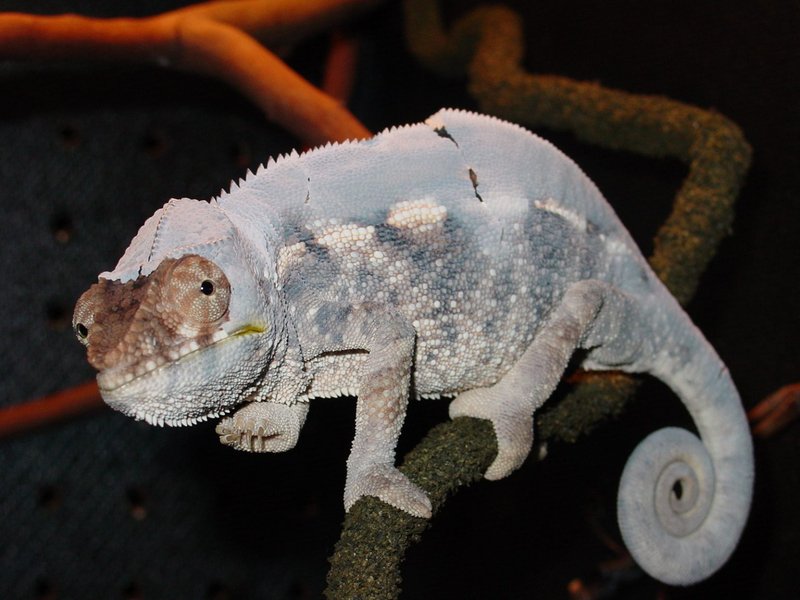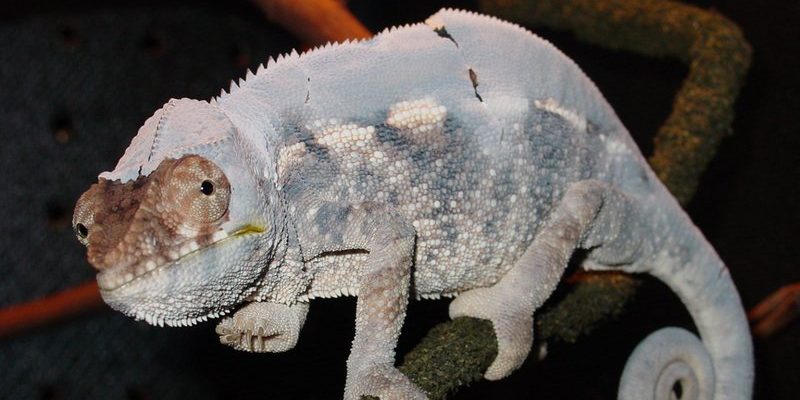
Chameleons, like your usual household pets, need attention when they shed. If you’re a new chameleon owner or curious about the process, it’s important to know how to support your pet during this time. You wouldn’t want your friend to struggle with an outfit change, right? Similarly, making shedding easy for your chameleon can help ensure they remain happy and healthy.
Understanding the Shedding Process
Shedding, or *ecdysis*, is a natural process for reptiles. Just like how we outgrow our clothes, chameleons need to shed their old skin to allow for new growth. Typically, chameleons shed in phases, which can occur every few weeks to months, depending on their age, health, and environment.
Here’s the thing: shedding isn’t just a mere cosmetic change. It’s vital for a chameleon’s health. During this time, their old skin can become a bit loose and may not fit as snugly as it used to. Think of it as a snake slithering out of its old skin, but chameleons can be a bit more delicate. If they don’t shed properly, it can lead to skin infections or other health issues. So, paying attention during this time is essential.
You might notice your chameleon getting a bit more irritable or hiding more than usual. This can be totally normal behavior during shedding. They might not feel like themselves as they deal with the itchiness that accompanies this process.
Signs Your Chameleon is Shedding
How can you tell when your chameleon is shedding? There are a few signs to watch out for. Here are some common ones:
- Color Changes: Their colors may become duller or darker, indicating they’re preparing to shed.
- Increased Activity: Some chameleons get more active and may climb around their enclosure more as they try to loosen their skin.
- Hiding Behavior: Some might want to go into hiding, seeking comfort from their surroundings.
- Itchy Skin: You may catch them rubbing against branches or surfaces to help remove dead skin.
Recognizing these signs is the first step in ensuring your chameleon’s shedding process goes smoothly. You want to create a safe and supportive environment for your pet during this time. Keep an eye out, and be prepared to step in if needed.
Creating the Right Environment for Shedding
The environment plays a huge role in making shedding easier for your chameleon. They thrive in specific humidity and temperature levels. If these aren’t right, your chameleon may struggle with shedding properly.
First off, ensure that the humidity in their habitat is appropriate. Generally, a humidity level of around 50-70% is best for shedding. You can measure this with a hygrometer, which is a handy gadget to have. To raise humidity, consider misting their habitat regularly, especially during shedding periods. Just like a nice shower can soften your skin, misting helps your chameleon’s skin loosen and come off more easily.
Next, the temperature should be just right. Chameleons often need a basking area heated to about 80-90°F. Make sure to have a cool side in their enclosure to give them options. A temperature gradient allows them to choose where they feel most comfortable during this time.
Assisting Your Chameleon During Shedding
Sometimes, your chameleon might need a little extra help when it comes to shedding. If you notice they’re struggling, there are gentle methods to assist them.
One way is to provide a shedding aid. This can be done by offering a *shedding box*—a small area filled with damp sphagnum moss or paper towels. This mimics natural environments, allowing your chameleon to rub against the texture while also getting some humidity. Just don’t try to peel off the skin yourself; that would be like someone yanking off your new shirt before you’ve had a chance to take it off!
Another tip is to ensure they stay hydrated. Dehydration can hinder shedding, making the old skin stick more. Regular access to clean water is a must, and sometimes, a light misting can encourage them to drink.
You can also keep an eye on their diet. Feeding them healthy, gut-loaded insects can provide essential nutrients that support their skin health. Think of it as giving them a vitamin boost for that new skin!
Common Shedding Problems
Even with the best conditions, shedding might not always go smoothly. There are some common problems you might encounter. One issue is when the skin doesn’t come off completely. This is often referred to as *retained shed*, and it can lead to discomfort or infections if not addressed.
If you notice patches of old skin clinging to your chameleon’s body, don’t panic! The first step is to ensure their humidity is adequate. You can help loosen those stubborn bits by gently increasing humidity in their habitat. Just make sure it doesn’t get too wet; you don’t want a swamp.
If the problem persists, it might be a good idea to consult with a vet who specializes in reptiles. Sometimes, underlying health issues could affect their shedding process. Consulting a pro can save you from bigger issues down the line.
When to Seek Veterinary Help
While most shedding is a normal part of your chameleon’s life, there are times when you should definitely reach out for professional help. If you see signs of distress, like excessive scratching, bleeding, or if the retained shed doesn’t come off after a week or two, it’s better to be safe than sorry.
Another red flag is if your chameleon suddenly stops eating or becomes lethargic. These can be signs that something isn’t right beyond just shedding. A vet can assess the situation and provide solutions, whether that’s treating an infection or recommending a change in care.
Also, keep an eye on their eyes! If you notice they’re looking cloudy or their eyes remain closed for extended periods, that’s a signal to get them checked out. Clear, bright eyes are a sign of a healthy chameleon.
Wrapping Up Shedding Season
Handling chameleon shedding properly is crucial for your pet’s health and comfort. By understanding the process, creating a suitable environment, and being attentive to their needs, you can help your chameleon thrive. Remember, shedding is a natural and essential part of their life—like a caterpillar turning into a butterfly, shedding allows your chameleon to grow and change.
So, grab your coffee, sit back, and enjoy watching your chameleon transform through this natural phase. With a little care, you’ll ensure that shedding is just another part of your chameleon’s life—smooth, manageable, and a tad bit fascinating!

